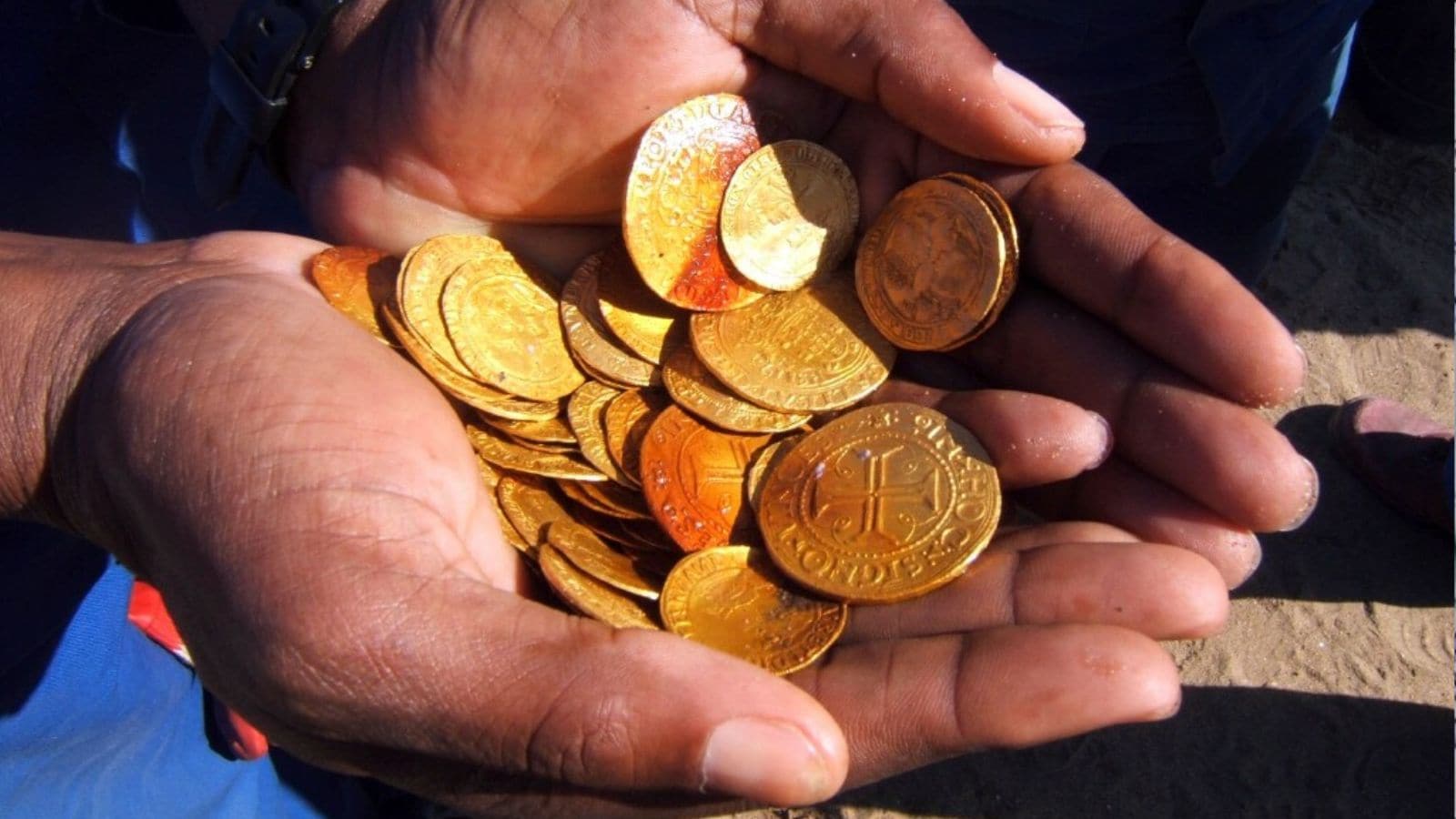By Diksha Modi,News18
Copyright news18

Wind-swept sands of Namibia’s Skeleton Coast, long notorious for shipwrecks, have revealed a maritime treasure buried for nearly five centuries. In 2008, miners exploring the restricted Sperrgebiet region stumbled upon fragments of wood and metal. What initially seemed like ordinary debris soon unfolded into a historical revelation: the remains of the ‘Bom Jesus’, a 16th-century Portuguese vessel that vanished in 1533.
The discovery has been hailed as one of Africa’s most significant underwater archaeological finds. The Bom Jesus, long sought by historians and treasure hunters, carried a fortune that underscores the opulence and global reach of the Portuguese Empire at the height of its maritime dominance.
A Glimpse Into 16th-Century Trade
Recovered from beneath layers of sand, nearly 2,000 gold coins were found alongside ivory, copper ingots, silver, and navigational instruments. Experts say these artifacts reflect the extensive trade networks between Portugal, Africa, and India during the Age of Discovery. Among the finds was an emblem symbolising King Joao III of Portugal, connecting the ship directly to Europe’s royal courts.
Marine archaeologist Dieter Noli noted that the vessel was transporting goods for the Fugger banking dynasty, one of Europe’s wealthiest financial houses at the time. Historians believe the Bom Jesus met its fate when a violent storm drove it onto the treacherous Namibian coastline, where it sank and remained buried for centuries.
Preserved by Time and Desert Sands
Remarkably, the arid desert climate safeguarded the cargo, preserving coins and artifacts in near-perfect condition. “The sand and dry conditions created a natural vault,” explained experts, highlighting the rare survival of such a large treasure after five centuries.
The shipwreck not only illuminates Europe’s maritime ambitions but also reinforces Africa’s central role in global trade and politics during the 16th century.
Legacy and Ownership
Although the vessel sailed under the Portuguese flag, the treasure is now legally Namibian property under UNESCO treaties. Portugal did not contest the claim, marking the find as a notable example of post-colonial cooperation. The Namibian government has announced plans to showcase the recovered items in a dedicated museum, allowing the public to witness a tangible link to the era when oceans connected empires and fortunes.
The Bom Jesus, long lost to history, now stands as a testament to the perilous seas, global trade, and the enduring allure of hidden treasures waiting to be rediscovered.



